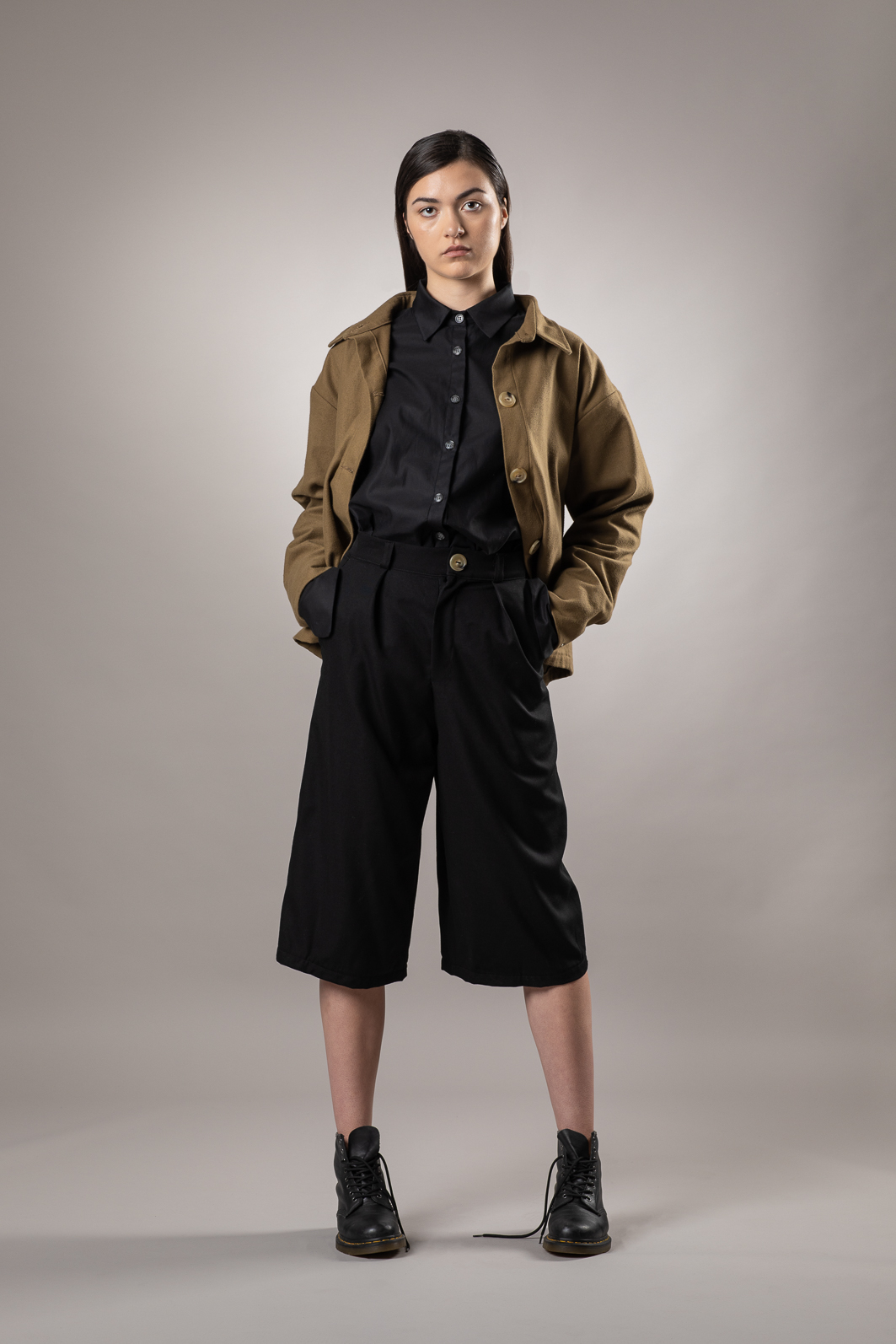
Nostalgia is a contemporary womenswear collection that explores feelings from memories via the clothes we wear - each garment is made with a purpose and intention, each holding within it a memory. This collection is a homage to my late grandfather, reflecting my admiration of him and his love for clothing. His style was always a talking point for my family, subconsciously I have found myself translating elements of his style into my own. Inspiration was derived from photos of my grandfather in addition to proportions and silhouettes informed by men’s workwear from the late 1900s. Designed specifically for a New Zealand market, a relaxed aesthetic and feel of comfortable clothing were a priority.
“Masculine” clothing is a recent interest of mine. As a child I was always the girliest of girls, wearing anything pink, glittery and quite frankly just ‘in your face’. However, as I matured and grew up around my grandfather, I was always interested in the clothing he wore. The navy boiler suits he wore to work, the knitted jumpers, white button-up shirts or even the many ties he always seemed to wear despite the occasion. It only recently dawned on me, that since his passing I have subconsciously adapted some of his styles into my own. To gain a better understanding of my grandfather's style and the influence his clothing has on me, I looked further into the fashion and workwear of the 1900s, particularly proportions and silhouettes.
Consumers are becoming more and more aware of the impact their spending habits are having on the environment. It is important to me to develop thinking surrounding ethical fashion and to show consumers how they can do their part. As a way to develop a more sustainable design practice, only natural fibres and locally purchased dead-stock fabrics were used throughout the collection. To sustain longevity, as our ancestors did during the 20th Century, sustainable good quality textiles were also used, including Egyptian cotton, cotton shirting, organic cotton, brushed cotton and wool.
Weaving sustainable practices into my working methods, during the toiling process, I worked out exactly how much fabric I would need for each prototype whilst utilising the Department of Fashion technician's supply of donated fabrics. Both approaches supported the saving and reduction of waste materials at the development phase of the design process. As a result, any fabric that was leftover could be used by another student at a later date.



